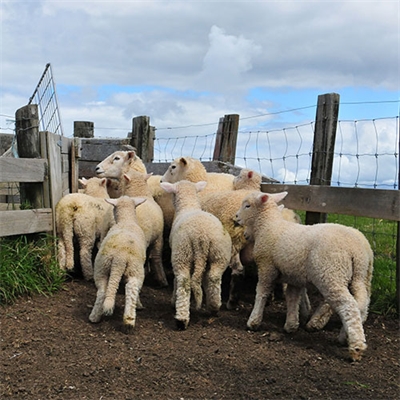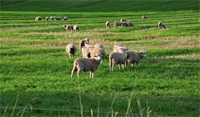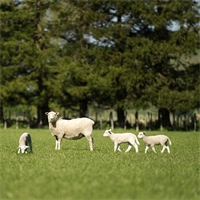
Ginny Dodunski, Beef + Lamb New Zealand's Wormwise Programme Manager

Tailing: A lamb drench at tailing is usually unnecessary
Wormwise advice for ewes and lambs this spring
WORDS & IMAGES PROVIDED BY BEEF + LAMB
Ewes
The ‘holy grail’ is a ewe flock that lambs in good condition (no ewes under BCS 2.5 and most ewes at 3.0-3.5), that is well fed in the weeks leading up to lambing and lambs onto feed that enables maximum intake in the critical early weeks of lactation.
Where ewes are managed as close as possible to these targets, the impact of worms on production is negligible. The amount of planning and work that goes into securing this outcome should not be underestimated. The process begins at weaning the previous summer.
The further away a farm is from these ideals at lambing time, the more likely that there will be noticeable responses from treating ewes with long-acting drench products. This common outcome suggests many farms have a significant opportunity to improve production by focussing on ewe body condition and autumn/winter feed management.
Long-acting pre-lamb treatments are an established risk factor for accelerating drench resistance. It is very common for them to be ‘leaking’ worms whilst animals are under treatment. Check for this by taking faecal samples during the pay-out period (docking can be a convenient time). A faecal egg count will reveal the extent of any leakage. An ‘exit’ drench may then be necessary to clean out resistant worms, or further samples may be required.
Undrenched ewes are an important source of refugia (where worms that are not drench survivors contribute some eggs to the pasture to help ‘dilute out’ resistant worms). Lambing some untreated ewes in amongst treated ones can help provide some refugia.
Lambs
Docking time
Lambs start to ingest parasites from the moment they begin nibbling grass. However, there is no need to administer worm treatments to lambs in their early weeks of life:
1. Egg-laying worm populations generally don’t establish in lambs until after they have become functioning ruminants (chemical signals in the ruminant digestive tract stimulate worm larvae to develop through to adults).
2. The majority of the production loss associated with worms (reduced appetite, reduced growth, and scouring) results from the lambs’ own developing immune response to gut worms, and this is absent in the early weeks of life.
Thus, a docking drench to lambs is typically unnecessary.
Pre-weaning
In some parts of the country, it is common practice to give lambs a drench pre-weaning. Where this practice has been evaluated by on-farm trial work, the results are inconsistent.
There is not always a liveweight gain response to a drench prior to weaning.
The factors that determine responses to a pre-weaning drench are probably similar to those that drive ewe responses to pre-lamb treatments: Light, underfed ewes lactating on short pastures will have lower peak milk production and a shorter lactation – thus ewes and lambs move into competition for pasture (clover) with each other earlier in the spring. In this situation, lambs are more likely to be impacted by parasites.
Once lambs are docked, there are more options for grazing management to increase feed to ewes and lambs, which can offer greater benefits than a pre-weaning drench. Examples are putting lambing mobs together and starting a rotation, pinching some cattle paddocks for ewe and lamb mobs, creep grazing of lambs; even selling ewes with lambs at foot to lighten the load and improve feed availability for the remaining ewes.
Choice of first drench treatment
We are now in an era where the ‘routine’ initial drench used for many years may well be allowing significant numbers of worms to survive. If a farm has not completed drench efficacy testing, this situation will be unknown.
At the very least, perform a ‘drench check’ on your first lamb drench. This involves a faecal egg count on 10 fresh samples collected from treated lambs 7–12 days after drenching. If there are significant eggs leaking through, it is time to seek expert advice and make a worm management plan for the summer and beyond.
Back to Real Farmer
Related

New Zealand is one of the few countries in the world where livestock is integrated into arable syste...
Read More

Livestock monocultures and inappropriate drenching practices are contributing to the emergence of in...
Read More